Reviews
Godzilla, Minilla, Gabara: All Monsters Attack / Gojira Minira Gabara Oru Kaiju Daishingeki / Godzilla’s Revenge
Ishirō Honda
Japan, 1969
Credits
Review by Sam Bett
Posted on 10 February 2013
Source Hulu
Categories The Compleat Godzilla
Barely a year after Destroy All Monsters! purportedly brought the Godzilla series to a close, All Monsters Attack aired as a Saturday-morning television special geared specifically at students on winter vacation. Children were a considerable part of the target audience of every Godzilla film since the original, but this was the first of the series to premiere on television, a medium far more readily accessible to children than the downtown movie theatre. Monster battles were the obvious attraction for juvenile audiences, but a dwindling special-effects budget at Toho Studios permitted an expenditure of less than one-third of that of earlier films. Toho’s solution to this budgetary conundrum was to interweave battle footage from a number of recent films (most notably Godzilla vs. The Sea Monster, Son of Godzilla, and Destroy All Monsters!) with just enough new footage to create a story that would sustain its young audience’s attention between the kaiju celebrity deathmatches.
The sewn-together, thrown-together appearance of the film’s supersaturated battle scenes has caused Godzilla fans to rank All Monsters Attack as one of the silliest films in the series, but such an analysis overlooks the stark and hyper-realist context which frames the zany succession of fight scenes. All Monsters Attack starts and ends in a place occupied by no other Godzilla film: modern-day Japan, a place where monsters don’t exist. Our protagonist, Ichiro, is a latchkey kid whose only solace is fantasizing about Monster Island, where Godzilla and his pantheon of antagonists dwell in perpetual combat. For the first ten or so minutes of the film, we follow Ichiro though the stark terrain of his reality: bullies who taunt him on his walk home from school, an empty apartment which shows no signs of his parents save a note from his mother on a chalkboard by the door and a slice of cake in the cupboard. Bored to the point of lethargy, Ichiro falls asleep while playing with a toy radio set and finds himself swept up in a wash of kaleidoscopic, psychedelic colors (this is, after all, 1969). A Pan-American airplane, at first full of non-Japanese passengers and then suddenly eerily vacant, sends him on a direct course across the boundaries of consciousness to the very object of his fantasy, Monster Island.
Why should we be surprised, after this hallucinatory transition into a Wonderland-style dream world, if there is little rhyme or reason to the succession of monster battles between Godzilla and the cast of well-known monsters that rapidly ensues? All Monsters Attack is the tenth film in the Godzilla series, and it’s safe to suppose that most of the children sitting in front of their TVs for this Saturday special broadcast had seen many of the previous installments, especially the most recent ones from which the monster battles had been swiped. It’s also safe to assume that few of them were anything but thankful for only having to wait thirteen minutes before Godzilla appears and torches a Kamacuras with his lightning breath. In an age long before YouTube, DVD or VHS, young Godzilla fans likely spent much more time recounting their favorite scenes from memory than actually viewing them onscreen. In this regard All Monsters Attack is, by design, a filmic digest, and feels more like a compilation of classic battle scenes than a feature in its own right.
Yet despite its low-budget production and derivative composition, All Monsters Attack is more than a simplistic pastiche. Halfway through, the frame narrative of Ichiro’s humdrum life swells to prominence, when the boy is kidnapped by a duo of bank robbers hiding out from the police in a abandoned factory by his apartment. Just as Ichiro’s conspicuous presence on the sidelines of Godzilla’s battles on Monster Island reminds us of our own spectatorship, the real-life sequences with the bank robbers counterbalance the absurdity of the fight scenes and remind us of the reality from which the Godzilla series was born: a Japan stricken with the growing pains of modernization and post-military redevelopment, where the monsters aren’t lightning breathing lizards but criminals and kidnappers: in short, other human beings.
More The Compleat Godzilla
-
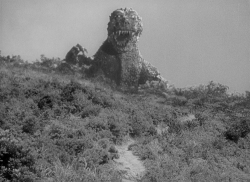
Godzilla
1954 -
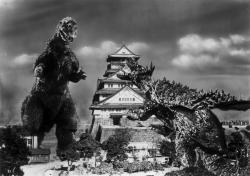
Godzilla Raids Again
1955 -
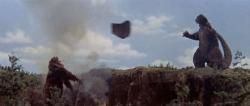
King Kong vs. Godzilla
1962 -
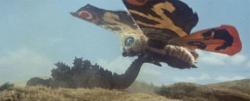
Mothra vs. Godzilla
1964 -
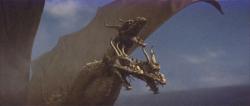
Ghidorah, the Three-Headed Monster
1964 -
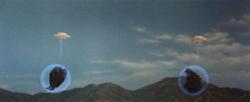
Invasion of Astro-Monster
1965 -

Ebirah, Horror of the Deep
1966 -
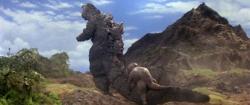
Son of Godzilla
1967 -

Destroy All Monsters!
1968 -
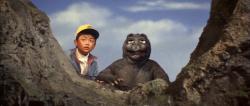
All Monsters Attack
1969 -

Godzilla Vs. Hedorah
1971 -
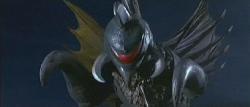
Godzilla vs. Gigan
1972 -
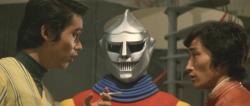
Godzilla vs. Megalon
1973 -
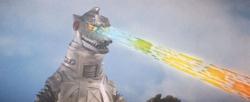
Godzilla vs. Mechagodzilla
1974 -
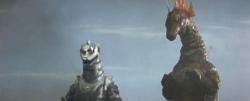
Terror of Mechagodzilla
1975 -
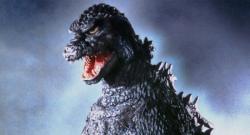
The Return of Godzilla
1984 -
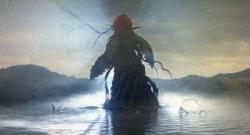
Godzilla vs. Biollante
1989 -
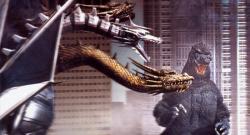
Godzilla vs. King Ghidorah
1991 -
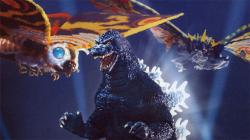
Godzilla vs. Mothra
1992 -
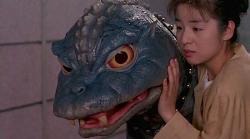
Godzilla vs. Mechagodzilla
1993 -
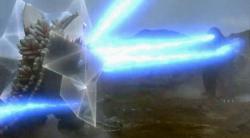
Godzilla vs. SpaceGodzilla
1994 -
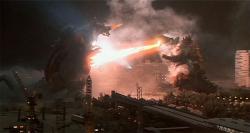
Godzilla vs. Destoroyah
1995 -
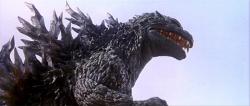
Godzilla 2000
1999 -
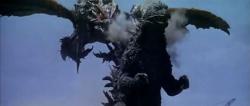
Godzilla vs. Megaguirus
2000 -
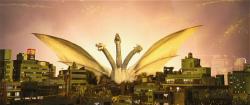
Godzilla, Mothra and King Ghidorah: Giant Monsters All-Out Attack
2001 -
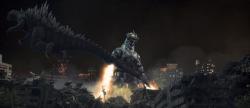
Godzilla Against Mechagodzilla
2002 -
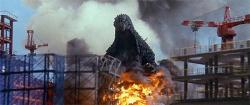
Godzilla: Tokyo S.O.S.
2003 -

Godzilla: Final Wars
2004
We don’t do comments anymore, but you may contact us here or find us on Twitter or Facebook.



